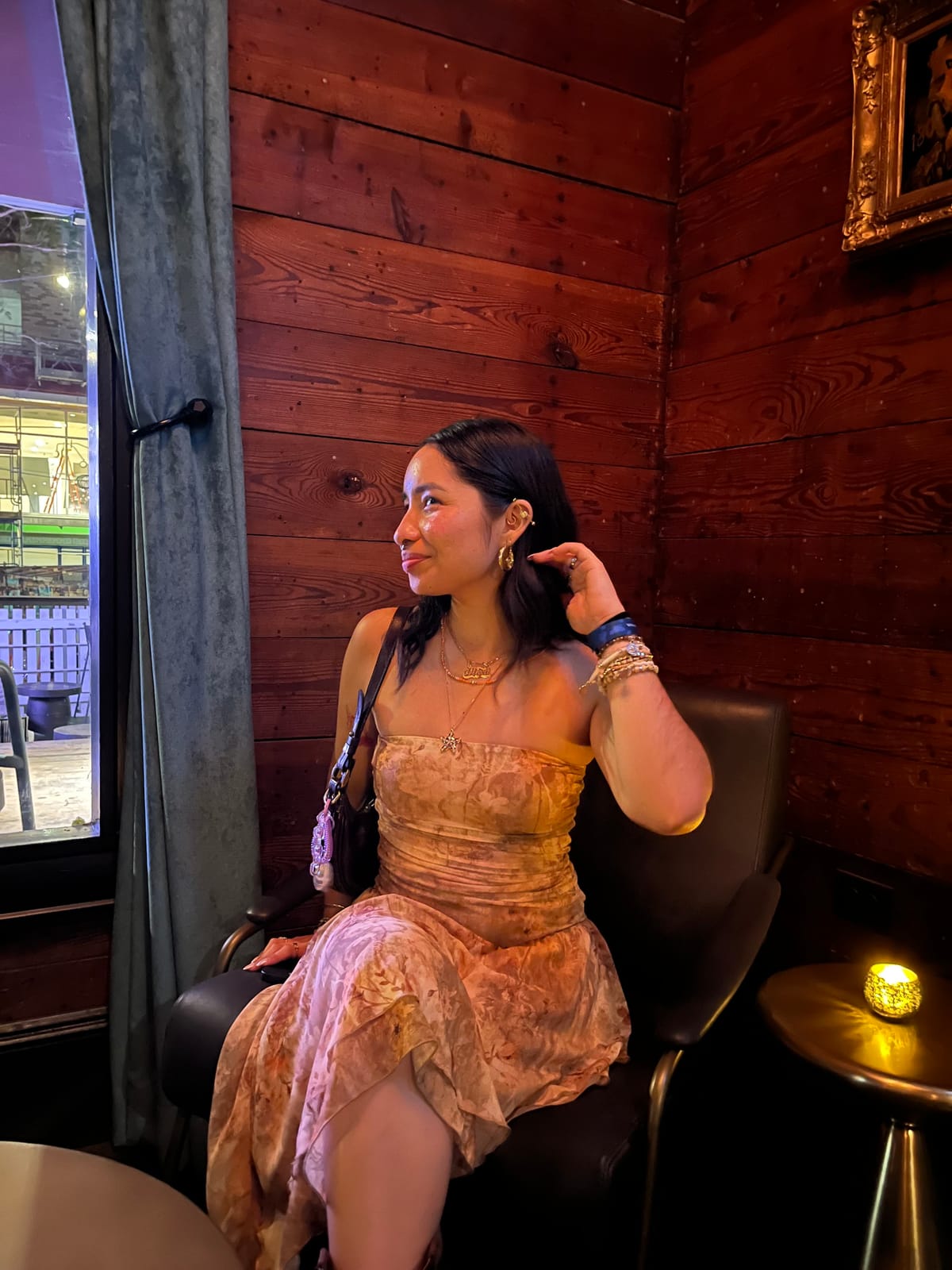Woolly Fashion: Alexa Martinez and Willow Delp
Woolly Fashion is back for fall 2025! In this season’s edition, Contributing Writer Justin Vasquez ’28 spotlights Alexa Martinez ’26 and Willow Delp ’26, two students who express identity through fashion by challenging norms and embracing authenticity, from exam-day fits to a fairycore style.

When it comes to dressing to impress and keeping up with the latest fashion trends, I am not one who can embody these concepts. Growing up attending a charter school with a dress code, I struggled to find appropriate looks that also reflected my personality. After coming to Amherst, I have tried my hardest to find my sense of identity within clothing. I am still in the process of finding my style. However, style doesn’t seem to be an issue for two particular students.
After seeing the constant jaw-dropping outfits presented by these students, class of 2026, I felt it was right to interview them and find out just how they found their style.
Alexa Martinez ’26:
I reached out and interviewed Alexa Martinez ’26 first. She described her style as dependent on the weather. As we enter the fall season, sunny days will be rare to come by. Martinez said that whenever she sees that the sun is still out, she tells herself to “wear all [her] dresses, all [her] shorts while [she] still can.”
Martinez found a way to incorporate fashion even within her academic life. She says, “Any time I have an exam, I will put on a good outfit.” Top to bottom, she shows up and out for exam day: “I put on cute little shoes and I’ll even curl my hair.” Dressing up has become a continuous practice she sticks to. This is her life mantra: “If I look good, then I’m gonna feel good, and then I’m gonna do good.”
“[Dressing up] is something I look forward to doing every day,” Martinez said. Martinez told me that, to her, picking out clothing feels like she’s “playing a dress-up game.” However, dressing up also has a deeper meaning to her. Martinez understood the societal norms in fashion for women, and she uses her dress to challenge some of these. To her, “dressing is a way to voice women. Dressing becomes powerful.” She hopes that her style inspires other women to try new things that branch out from the norms placed upon them.
Willow Delp ’26:
Willow Delp ’26 agreed with Martinez’s view on fashion as a way of demonstrating empowerment. They describe their wardrobe as “fairy core.” Fairy core consists mainly of pastels and is associated with whimsical clothing. Delp told me that they like dressing in a way that “differs from the mainstream.” Dressing, to Delp, is an opportunity to branch out their style and explore what feels most comfortable while also expressing who they are. To Delp, fashion “expresses [their] uniqueness and individuality.” Making themselves known in the most authentic way possible is Delp's ultimate goal.

Their interest in fashion began during their sophomore year of college. Having come from a high school with a dress code, Delp could not explore their style freely until they arrived at Amherst. Once they gained the confidence to dress outside the box, all that was left was finding the aesthetic that matched how they defined themselves. Having later classes in the afternoon helps them be more intentional with what they choose to wear day-to-day. Fashion is also a form of rebellion for Delp. Through their unique sense of style, they “reject the pressures to dress in a form that caters to male audiences.”
For both Martinez and Delp, self-expression is key. Dressing is a form of challenging one of the many norms that have been placed upon non-male identifying people. “Modest” fashion, with clothing that covers as much skin as possible, has been an ingrained ideal that women have been expected to adhere to for generations. Martinez directly attacks this concept and told me that “if it shows skin, it shows skin.” Embracing feminine and masculine styles of dress is something they both strive to implement in their style.
Conclusion:
Martinez and Delp are two examples of students on campus who highlight one of the many styles displayed by students every day. They help deepen my understanding of the importance fashion has in shaping identity. Their goal is to let audiences know that dress has power. Finding the aesthetic that matches oneself, without worrying about what society has to say, breaks the fear others have of dressing “out of the ordinary.” Rather, it helps people feel inspired and encouraged to branch out and find what suits them. Fashion helps express who one is. Everyone has a sense of style. All that awaits is for one to discover it and embrace it.




Comments ()